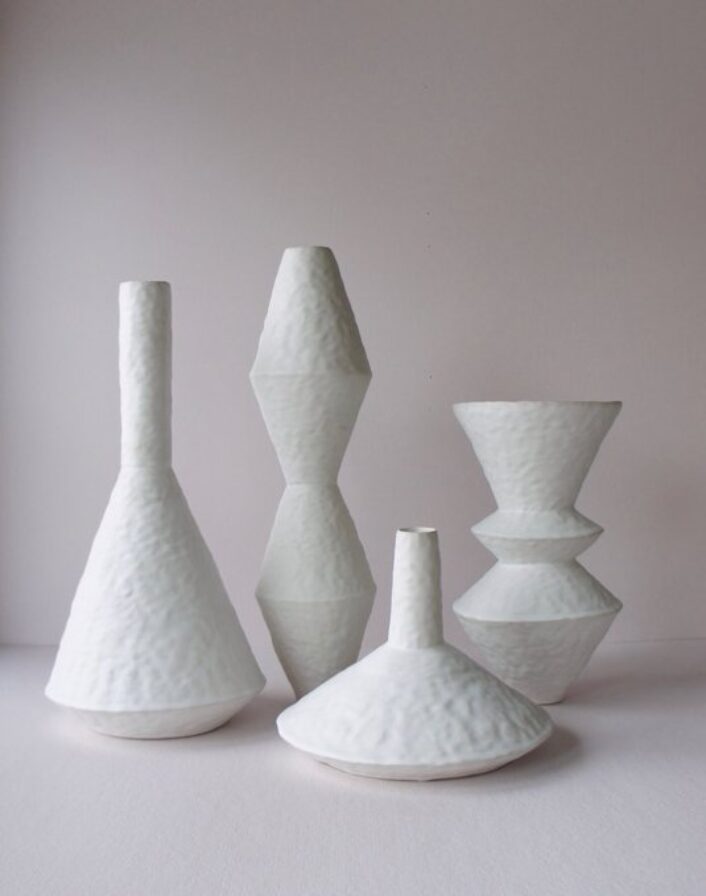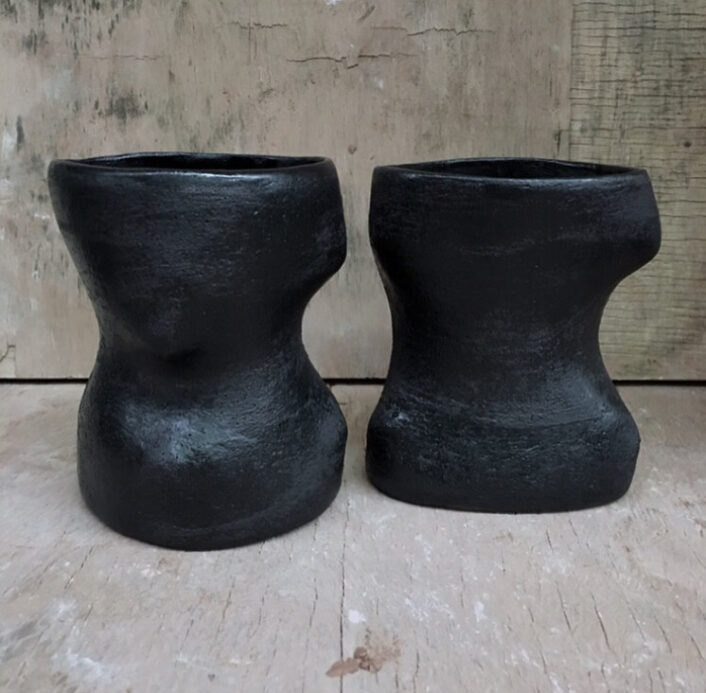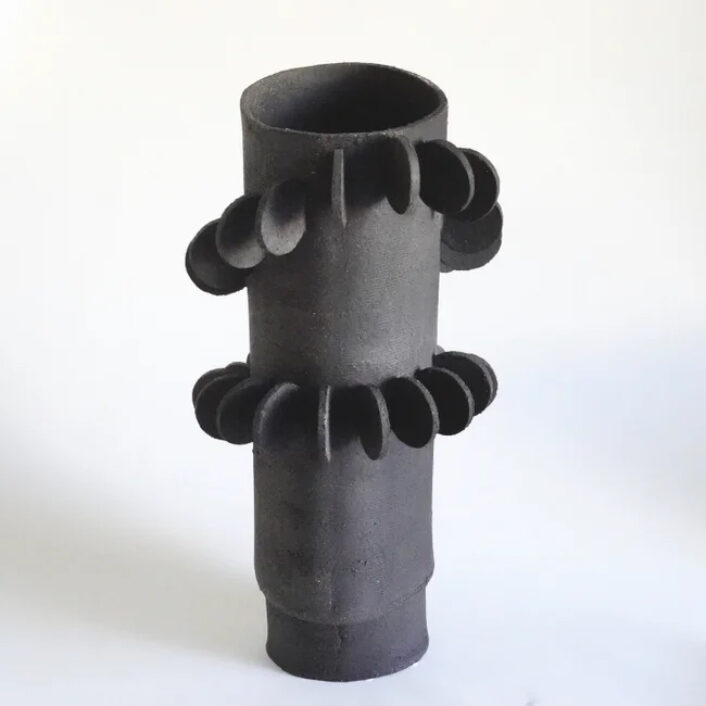Design
Eric Roinestad
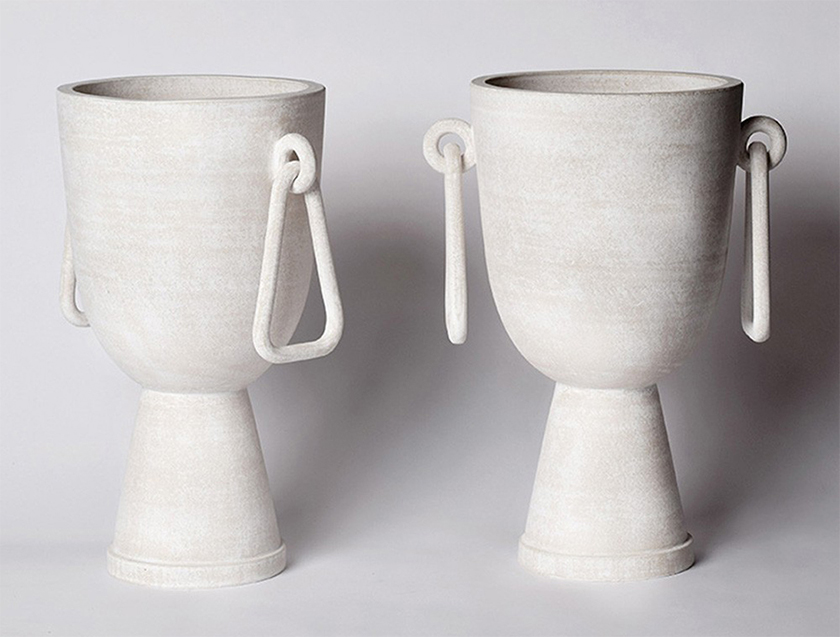
Strikingly elegant!
Image courtesy of: Prodeez
Eric Roinestad is a fixture in California’s bountiful ceramics culture; he integrates the feeling of California folk modernism with his Scandinavian heritage. The ceramist was born into a family of artisans. He pursued a degree in art and design from California Polytechnic State University and used the skills he’d garnered to open a boutique graphic design studio in Los Angeles.
In the late 1990’s, Roinestad launched Flaunt Magazine and served as the creative monthly’s art director for four years. When the designer was asked to be Capitol Records’ senior art director in 2002, he left his magazine to oversee the company’s album design and packaging. The artistry of ceramics soon came calling to Roinestad; and what began as a passion project quickly morphed into a career.
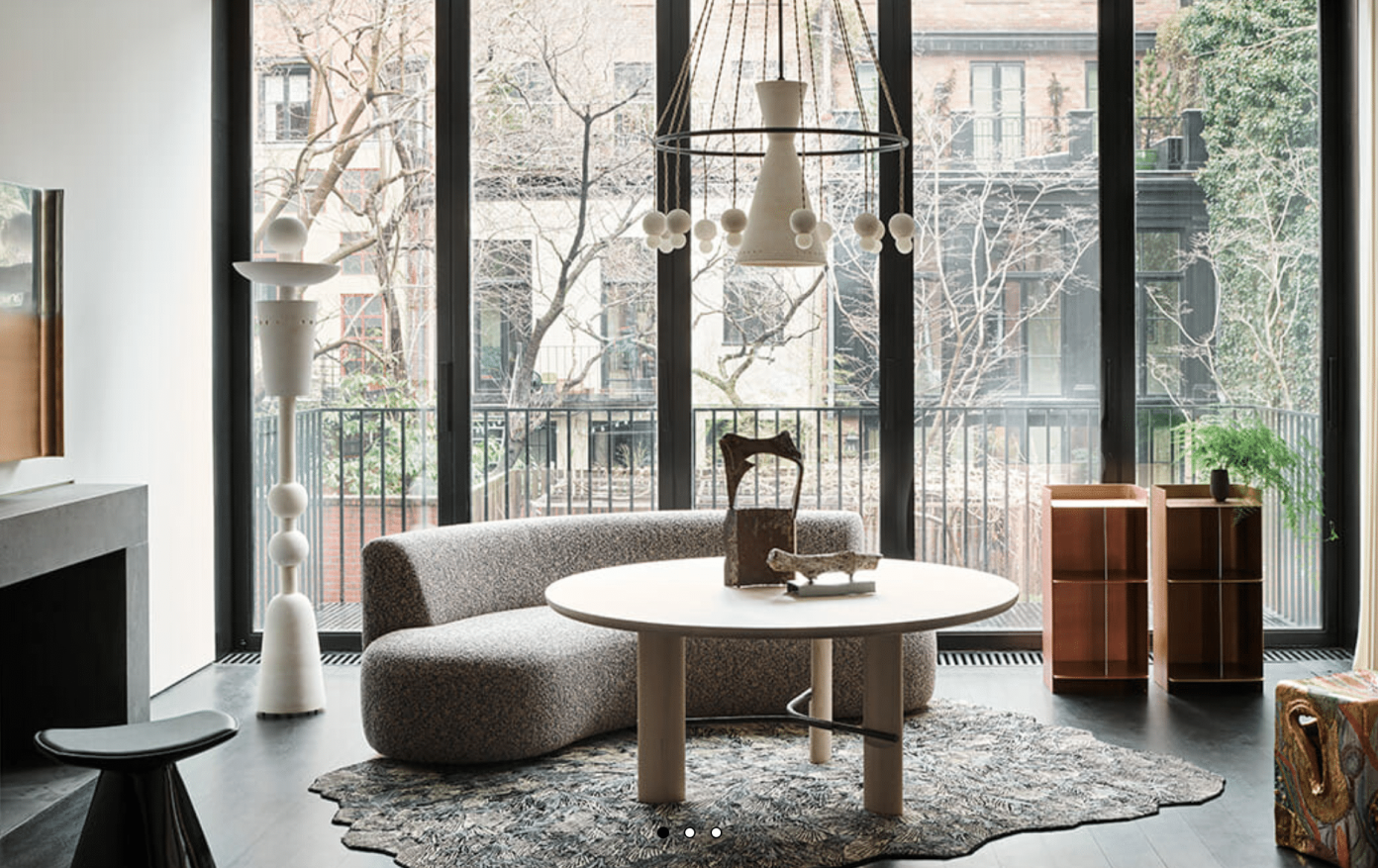
The chandelier Roinestad designed for David Alhadeff, The Future Perfect’s founder. This lighting feature was the designer’s first attempt at a large-scale lighting. To this day, this piece remains one of Roinestad’s most requested commissions.
Image courtesy of: Ageist
Roinestad has a natural gift for proportions and form… both of which are accentuated by the natural beauty of his home-state of California. His vessels, though modern in design, evoke an essence of historical architecture.
The designer made his Design Miami debut six years ago with a lighting collection that quickly caught the attention of collectors. The following year, Roinestad expanded upon this collection… included was a chandelier, hanging pendants, and floor lights. In addition, Roinestad transformed his signature stone masks into wall lights where the light glow beautifully illuminates the mask. The result creates (courtesy of In/Out By Arent Pyle) “caricatures which cast eerie shadows on the wall.”
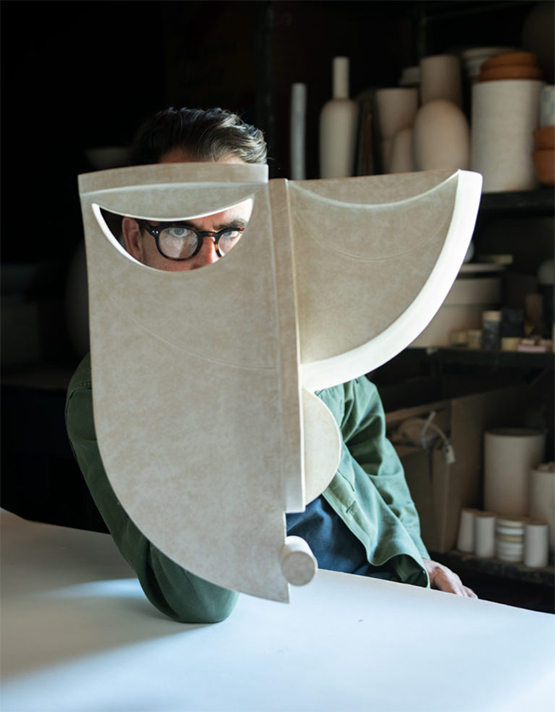
Roinestad and friend…
Image courtesy of: Surface Magazine
Since 2014, Roinestad has been represented solely by The Future Perfect. Last year, the self-proclaimed perfectionist debuted his latest body of work called, “Arroyo Seco.” The long-awaited debut took place at Casa Perfect in New York City and was a collection of freestanding sculptures, chalices, and lighting fixtures (courtesy of Surface Magazine), “all adorned with nature-inspired figures that recall the joyful surreality of Les Lalanne but with decades of his own refinement and artful subtlety packed into it.”
Covid postponed this show; but Roinestad was happy to have the extra time to refine his collection. Remaining in Los Angeles for the duration of the lockdown, the artist was re-inspired by his surroundings. The collection’s name references the location of Roinestad’s home… an area that is well known for its rich history of both artists and artisans.
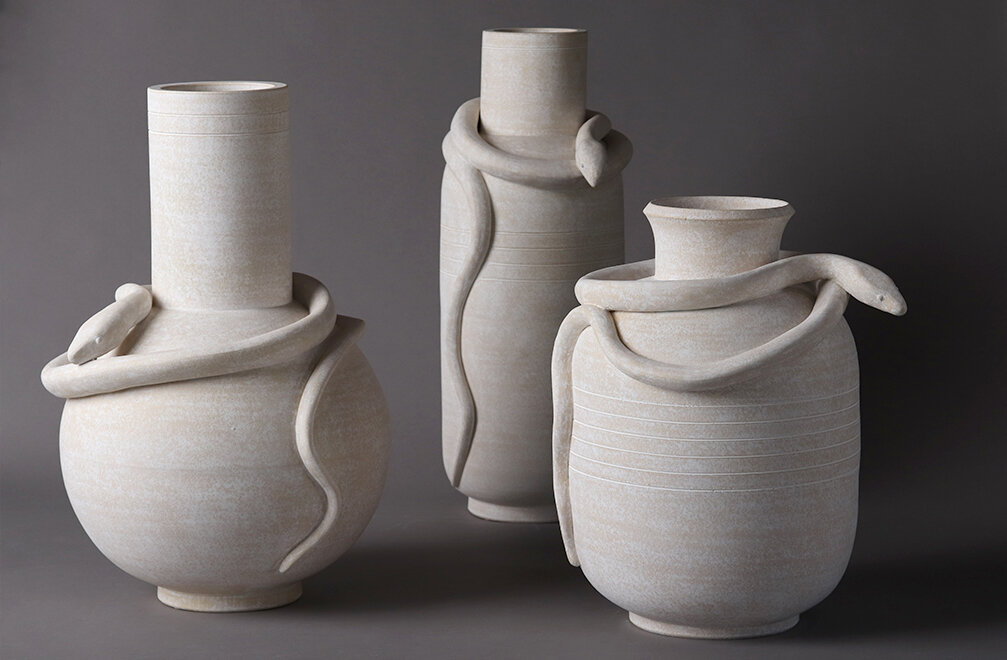
Snakes coil around the vessels of Roinestad’s newest collection.
Image courtesy of: Eric Roinestad
Arroyo Seco is a perfect representation of Roinestad’s time spent at home during the pandemic. Prior to sending his treasures to their new homes, ceramic critters and beloved offerings were bestowed upon vessels… (courtesy of Architectural Digest), “Snakes coil around table lamps and vessels, cats peer out from the garden, owls flank the fireplace. California poppies poke their heads out of wine bottles.” Coincidently, the wine bottles were also made of ceramics.
The vessels themselves look as though they might have been pulled from the rubble of Pompeii… if not for their whitewashed, bisque palette and smooth matte surface. This simple yet elegant look is achieved after Roinestad flat-washes the vessels and sands them. This allows the clay to show through the glaze.

A grouping of vessels
Roinestad’s ceramics have been features in publications worldwide including Architectural Digest, Elle Decor, Architectural Digest France, The New York Times T Magazine, and Wallpaper.
Image courtesy of: Eric Roinestad Studio
Roinestad’s most unique pieces are the tribal masks that he designs; for the most part, they resemble ancient Etruscan forms. For his most recently collection that debuted at Design Miami last December, Roinestad drew insight from Oskar Schlemmer’s forms. It is not surprising that the Bauhaus pioneer served as a source of insight for the ceramicist.
Roinestad’s main goal is to create a visual dialogue. He says (courtesy of Luxe Interior + Design), “Just because something has a function doesn’t mean it can’t be sculpture. People are just more aware of sculptural ceramics,” he points out, “whether it is a light or something else.”
